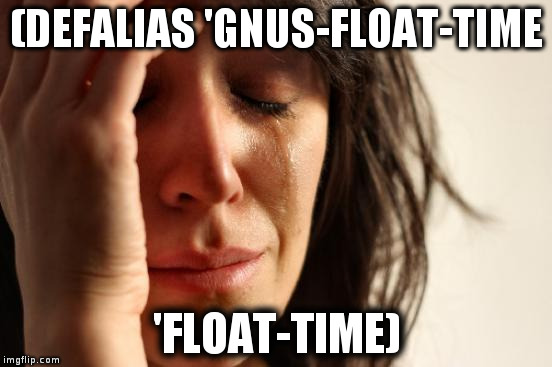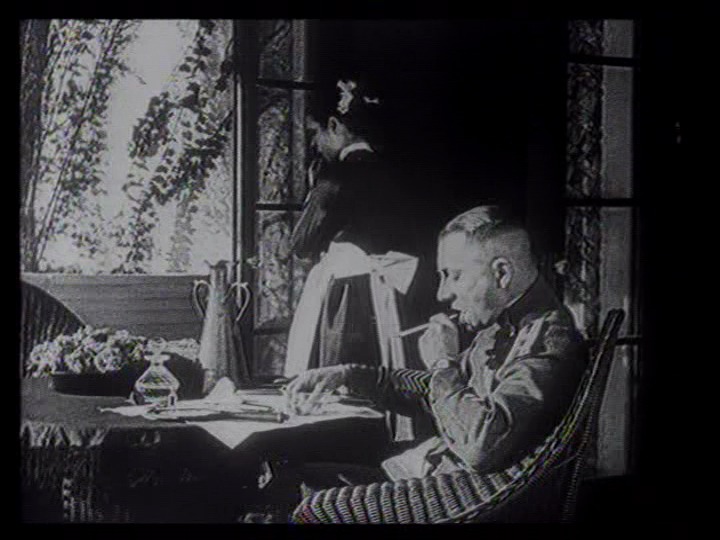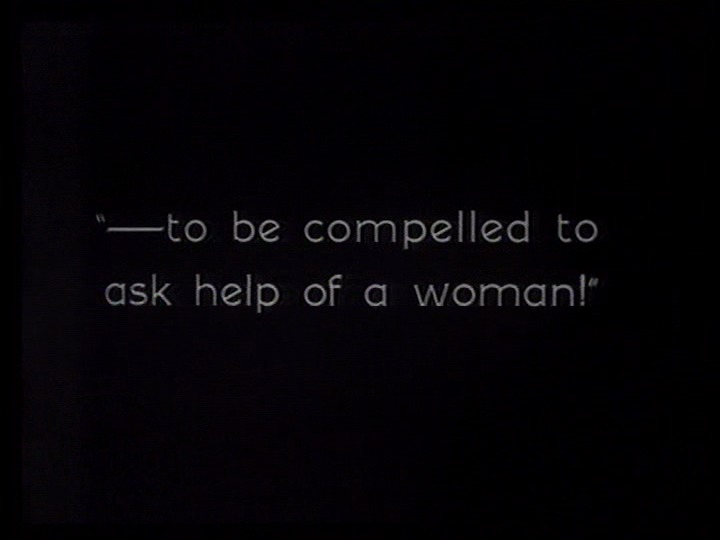My video player wasn’t able to play this tv show. And my record player wasn’t able to play this flexi by Crosby (included in the Post York comic book). Enjoy these digital/analogue failures together.
My video player wasn’t able to play this tv show. And my record player wasn’t able to play this flexi by Crosby (included in the Post York comic book). Enjoy these digital/analogue failures together.
My interest in reading comics really took off last year after many years of taking a back seat to, well, everything else. So I’ve been trolling the web for things I’ve missed.
And then I happened upon the NBM web site.
NBM has been around since the 70s, and I’ve bought oodles of stuff from them over the years, I had thought. But I went through just a single of their publishing “sub labels”, ComicsLit, and I bought this stack after a frenzied ten minute clicking session:
I thought there was possibly something interesting going on here. Going to the web sites of, say, Fantagraphics, Drawn & Quarterly or Uncivilized would never get me a stack that high. Because I’ve already bought everything they published.
So what is it about NBM that apparently makes me miss out on so many things? Forgetfulness on my part? Or something else?
Let’s look at the comics.
I really enjoy Lewis Trondheim. The “Little Nothings” series is very true to the name: It’s short humorous vignettes:
I find this sort of thing very entertaining. But let’s look at the book:
Man, those are some ugly fonts. And a drop shadow? Really?
And what’s up with the ComicsLit logo itself? That’s… not a very attractive logo. And the binding dissolved upon opening the book.
Hmmm. Am I onto something here to explain why NBM doesn’t feel as necessary as, say, Drawn & Quarterly?
A large part of what NBM publishes are comics translated from French, like this book by Alfred & Oliver Ka:
(Faded black ink on the cover, weird “frame” around the image.)
It’s a harrowing tale. It’s open to obvious criticisms about, well, being too obvious, but the way it all ends was, I think, simply marvellous. It’s fantastic.
Starts off like this:
Ends like this:
A couple of larger books by Étienne Davodeau:
“The Initiates” is a comics reportage about Davodeau following a year at a farm making wine. It’s absolutely fascinating and so good humoured. A pleasure to read. “Lulu Anew” is a story about freedom told in a quite unique way: A group of friends are gathered around a table and talks about their friend who isn’t present. It’s riveting.
Lovely artwork, great reproduction. Both these works were previously published in France in multiple volumes. The trend in US publishing is to gather them into single, thick volumes, as the traditional European “album” format apparently doesn’t sell in the US.
Like this earlier series by Vittorio Giardino, where NBM had volumes left over from 2001:
I adore Giardino’s artwork:
NBM, like most US publishers, doesn’t use hand lettering for translated works. Sometimes it’s not as noticeable, but when there’s a lot of text, and they choose a font that’s not … quite … right, it’s disturbing. It gives the speech a uniformity that makes my eyes go all tired.
Again with the drop shadows in the logo!
And the shadows are to the opposite side on the author’s name.
They fixed that in the next volume.
Hey! An actual well-designed cover:
I think this is an example where collecting several albums into one album doesn’t work as well. (It worked very well in the Davodeau books.)
Originally published in three albums (I would guess from the length), the story here is a bit too unfocused. It’s too much back and forth to feel comfortable as a single volume. I started getting a bit impatient at the end of the second third.
Again with the frames! And how many different fonts are there? Four? And I’m not fond of the “Isaac” font at all. But at least there are no drop shadows.
Nooo!!!
And how come some of the fonts went all pixilated?
Anyway, these two small books each collect two albums, and is probably where NBM wanted to see if the books would sell if they reduced the size a bit. More “literary”. The result is this:
Itsy bitsy panels, itsy bitsy lettering. And some of that lettering is done really, really badly. By a computer.
Oh, the contents? It’s not that compelling. It starts off pretty well, but I lost interest completely during the third album, and just continued reading to find out how it ends. But it doesn’t. There’s a fifth album published in France in 2005, and then Blain dropped the series, so I guess he lost interest, too. Perhaps during the third album?
I had my misgivings about this book:
It’s a series of comics produced by some arrangement with the Louvre. My guess is that the Louvre is paying for it all, which is never a good idea, because books made to order are seldom any good.
It’s not as bad as I thought it would be. It’s pretty vigorous and silly.
And you gotta love that anatomy. What would you call that pose? Brokestomach?
Hey! A sideways silent book!
Quite unusual for an NBM book. Based on this stack (which is mostly from the ComicsLit series, so it’s somewhat skewed), the NBM people are very strong on narrative. Virtually all the books here have very “story” narratives, if you know what I mean. You can tell the plots to people, if you’re so inclined. Not much formal experimentation or relying on the artwork to tell you something less effable.
All these books were translated from a foreign language, mostly (or all?) French. And they’re mostly pretty good. Quite a few quite excellent. But NBM also publishes home-grown books… and here my problems began…
Neil Kleid isn’t a good writer.
Everything that happens on the page to the left is lifted from a thousand made-for-tv movies. The “Hurry up with those spuds”/”They’re coming, they’re coming!”, the fake drama where no drama would be real, the joshin’ and establishing shots, the…
It just goes on that way. I had to ditch it after a few more pages.
Rob Vollmar is a better writer.
He’s still pretty bad, though.
And nothing signifies “literature” like setting your stories during the depression.
I ditched these books, too, after a few more pages. Bad art, awful writing.
Claudia Ahlering has a pretty pleasing liveliness to her artwork, and the story told here (about gangs in New York in the 70s) is interesting, but it’s not… actually… good…
This cover doesn’t have any of the usual NBM ticks (the many logos, lots of fonts, drop shadows, frames), but it still manages to look… uhm… awful?
And despite enjoying the artwork, I couldn’t really convince myself to bother. The computer lettering is particularly annoying in this book:
Finally, War-Fix by David Axe and Steven Olexa:
It’s about how addictive wars are for war correspondents. Heard it before? Yes, you have.
But it manages to be readable by having nice art.
Olexa sometimes tends towards superhero aesthetics, but it kinda works.
Not a good book, though.
Is NBMs domestic strategy to pair up authors who can’t write comics with artists who want to draw comics? I find it interesting almost all of their domestic books have that setup, while virtually none of the translated ones do.
Anyway, that’s it. I think I can sum up my apathy towards NBM this way:
1) Their cover designs suck. Whereas Drawn & Quarterly make books that you immediately desire, NBM doesn’t create lovable objects.
2) The production quality is uneven. Sometimes the interior pages look fantastic, sometimes they’re barely readable.
c) Their untranslated works range between OK and awful.
I guess this all sounds pretty shallow. I should look obsessively in my local comic book store to see whether NBM has published more stuff as great as the Étienne Davodeau books. It’s the comics themselves that count. Etc. Etc.
But it doesn’t really work that way. If you’re not excited about owning these objects, you’re not excited about owning these objects.
And it doesn’t look like I’m the only one that feels this way. I checked out the three major US comics awards on Wikipedia: The Ignatz, the Harvey and the Eisner. The last award NBM won was in 2003, for the Mattotti, and the only previous win was a P. Craig Russell book in the 90s. Both books are visually interesting, and adapt well-known works.
Well, I’m off to order the rest of the NBM books that I’m missing. But I’m going to steer clear of all US-produced works that have a separate writer and artist, I think.
I mean maintainability. Yeah.
This is long and meandering, so here’s the summary: Gnus (and a couple of other Emacs packages) are dropping XEmacs support. Meanwhile, here’s a GIF of a cat:
 When I took over Gnus, the Emacs newsreader, in the mid-90s, it seemed natural to do the development outside of Emacs. Emacs was on a very slow and stately release schedule. In addition, it seemed vital to support many different versions of Emacs, since people were slow to upgrade Emacs, and there was the XEmacs fork which was superior in some ways. (Images! Fonts! Multi-lingualism! Yay!)
When I took over Gnus, the Emacs newsreader, in the mid-90s, it seemed natural to do the development outside of Emacs. Emacs was on a very slow and stately release schedule. In addition, it seemed vital to support many different versions of Emacs, since people were slow to upgrade Emacs, and there was the XEmacs fork which was superior in some ways. (Images! Fonts! Multi-lingualism! Yay!)
So Gnus developed its own ecosystem of compatibility functions to support everything from Emacs 18 to all the XEmacs version to the latest Mule-breaking Emacs releases.
Instead of assq-delete-all , there’sgnus-delete-alist. Instead of union, there’s gnus-union. And on and on. When reading the code, that’s not a good thing. Instead of having lots of familiar functions that you know what they do, you’re instead confronted by a barrage of functions that are unfamiliar. You have to look them all up to understand the code. Which means that only Gnus experts can understand the code.
 Now, the last decade (or so) Emacs development has proceeded very swiftly. Emacs has gotten built-in support for HTML, lots of new Emacs Lisp constructs like when-let, pcase, new more functional libraries like seq, and support for lexical binding.
Now, the last decade (or so) Emacs development has proceeded very swiftly. Emacs has gotten built-in support for HTML, lots of new Emacs Lisp constructs like when-let, pcase, new more functional libraries like seq, and support for lexical binding.
This hasn’t happened on the XEmacs side. XEmacs development has slowed way down.
In the last few years, whenever somebody has made even the most trivial change, the Gnus build bot would signal some breakage, which would then have to be fixed. Katsumi Yamaoka is really good at fixing these sort of things, but it leads to feeling of stepping on egg shells. You make a trivial change that takes 30 seconds, and then you either have to spend half an hour tweaking it to get it to build on Emacs 23 or XEmacs, or you dump all that work on Katsumi.
It’s not the most efficient way to develop stuff, and it feels discouraging. So for a couple of years I’ve been thinking of dropping support for anything but the Emacs mainline.
Installing and building the development version of Emacs on a modern GNU/Linux system is preposterously easy:
sudo apt-get build-dep emacs24 git clone git://git.savannah.gnu.org/emacs.git cd emacs make
And you’re done. You now have a fully-featured Emacs, built with all bells and whistles.
But I didn’t do anything about the situation, because dropping XEmacs support would be kinda dickish. It would make things easier for me, but I didn’t want to be a dick.
Then, the last few weeks, these things happened:
People say that Emacs is a “everything but the kitchen sink, and then the kitchen sink” kind of editor, but SXEmacs is all that, and a lathing workbench, a jetpack and a hydroponics plant.So I thought: Hey! Now I can do this! I can just let the eminently capable SXEmacs people worry about Gnus for XEmacs in the future, and I can bring Gnus “home” to Emacs.
I posted an outline and awaited reactions. And most people seem positive. David Engster, the CEDET developer, says that he’s pretty much doing the same thing. Org mode almost dropped XEmacs support earlier, but then changed their minds.
It’s not unanimous, understandably enough.
Dropping XEmacs support (and support for older Emacsen) is uncomfortable, and doesn’t make me happy. But I think it’s the way to proceed at this point.
The thought of making the Gnus code base less obfuscated does make me happy, though.
It’s funny how Erich von Stroheim looks just like his name sounds.
Bloopers! Now he’s got an arm band… 
Now he doesn’t! Oh the humanity! 
I wish people would stop making interlaced DVDs. I mean, mplayer de-interlaces them just fine, but it means that the vertical resolution is, in effect, half of what it should be. It’s annoying.
I listened to Windowpane instead of the soundtrack.
I found this film quite intriguing. So many odd things happens. It might just be all the mojitos talking, but I was going “wha? whaaa?” quite a bit, here.
It’s good.
Foolish Wives. Erich Von Stroheim. 1922.
More Mojito
This post is part of the F&C series.
Er… I guess standards changed… 
That’s the beauty in question. 
Even crossing the street was almost heroic. 
I listened to Wrong Eye instead of the alternatingly jaunty and maudlin soundtrack.
It’s a very bowdlerised “behind the scenes” look at Hollywood. Kinda fun.
Souls for Sale. Rupert Hughes. 1923.
Mojito
This post is part of the F&C series.